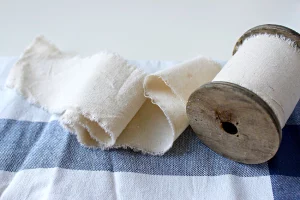 Cotton is made of plant fibres and is used for clothes, bed linens, tablecloths, and a number of fabrics we use in our everyday life. Fabrics made of cotton are breathable, soft, and comfortable. While cotton blends require a bit less maintenance, 100% cotton textiles will need a bit more to stay in good shape over the years.
Cotton is made of plant fibres and is used for clothes, bed linens, tablecloths, and a number of fabrics we use in our everyday life. Fabrics made of cotton are breathable, soft, and comfortable. While cotton blends require a bit less maintenance, 100% cotton textiles will need a bit more to stay in good shape over the years.
Cotton clothing can be washed in the washing machine or by hand. Even though the fabric can withstand high temperatures, try to avoid them to prevent the fading of the colours. What is more, frequent washing at high temperatures will cause shrinkage and wrinkling.
In this article, we will talk about things you can do to properly take care of your cotton garments and make sure they look good even.
The cleaning and maintaining methods we mention below are suitable for 100% cotton fabrics, as well as for cotton blends. Before attempting anything, check the fabric care label for any specific requirements and follow all instructions to avoid damage to the fabric and make sure you achieve the best results possible.
Here is how to clean a cotton fabric
- Pre-treat stains – If your cotton garment has stains, pretreat them before throwing it in the washing machine. It is best to tackle fresh stains, however, depending on the type of stain you got, removal may be successful even if it sat on the fabric for a while. Use regular stain removal (do a test in an inconspicuous area to check if discolouration or damage occurs).
- Choose a suitable laundry detergent – A heavy-duty liquid laundry detergent is perfect for removing heavy soil or body odours from fabrics. However, if your garments are not too dirty or you are going to hand wash them, any detergent will work.
- Pick the correct water temperature – Warm or cool water is the best washing temperature to prevent shrinking, stretching, and colour bleeding (unless the cotton clothing is worn close to the body, such as underwear, socks, or sleeping gear). Cooler water temperatures will help prevent fading. To remove bacteria, body filth, and bodily fluids, wash underwear, socks, pyjamas, bed linens, bath towels, and kitchen towels in hot water. This is especially critical if someone in the family is ill, very young, very old, or has a weaker immune system.
- Choose the correct cycle – Cotton can be washed with most cycles. If your laundry machine has a specific cotton cycle, use it. If not, pick any regular one which will work well enough for the cleaning of the cotton fabrics.
- Use the dryer in the right way – Wrinkling and shrinkage may occur if you overdry cotton. To prevent that from happening, you can either pick a lower drying temperature or select a permanent press cycle. If you are drying bed linens, towels, and tablecloths, you can pick a higher temperature.
- Ironing and air drying – When items are retrieved from the dryer while still slightly moist, most cotton fabrics require relatively little ironing. Take them out midway through the drying cycle and hang them to dry to prevent wrinkling.
Cotton can be dried outside on a clothesline or inside on a drying rack. While the sun’s ultraviolet rays will help brighten white cotton, hang coloured cotton clothes away from direct sunlight to prevent fading.
Additional tips on handling cotton fabrics:
- To treat stains, avoid using undiluted chlorine bleach (it can weaken fibres and cause holes in cotton fabric). A diluted solution can be used safely on cotton or cellulosic fabrics for stain removal and whitening. Always follow the instructions on the bleach label. If applied too frequently to whiten clothing, even diluted solutions will weaken cotton fibres, causing them to rip and prematurely wear out.
- An oxygen-based bleach, which works slower than chlorine, is a better choice for whitening and brightening white and coloured cotton garments. Allow the materials to soak for at least one hour for the greatest results. It is always preferable to read product labels and follow the recommendations mentioned on the packaging.
- Always iron on the wrong side of cotton cloth with a medium-hot iron. Use a pressing cloth between the iron and the fabric for extra protection. Extremely high ironing temperatures can burn cellulosic fibres. The scorching or yellowing occurs as the fibres begin to burn.
- Cotton slacks should be folded and stored in a dresser, while cotton shirts should be hung in a closet to avoid wrinkling.
- When storing 100% cotton things for an extended period of time, you won’t have to worry about moths or moth larvae consuming vegetable-based fibres (moths prefer animal fibres). However, carpet beetles and their larvae that consume cotton fibres must be avoided. Natural repellents such as cedar balls and cedar oil can help.
- Fabric softeners soften cotton fibres and may reduce some wrinkling. However, it is not required for cotton clothing care, and the usage of fabric softener is optional.